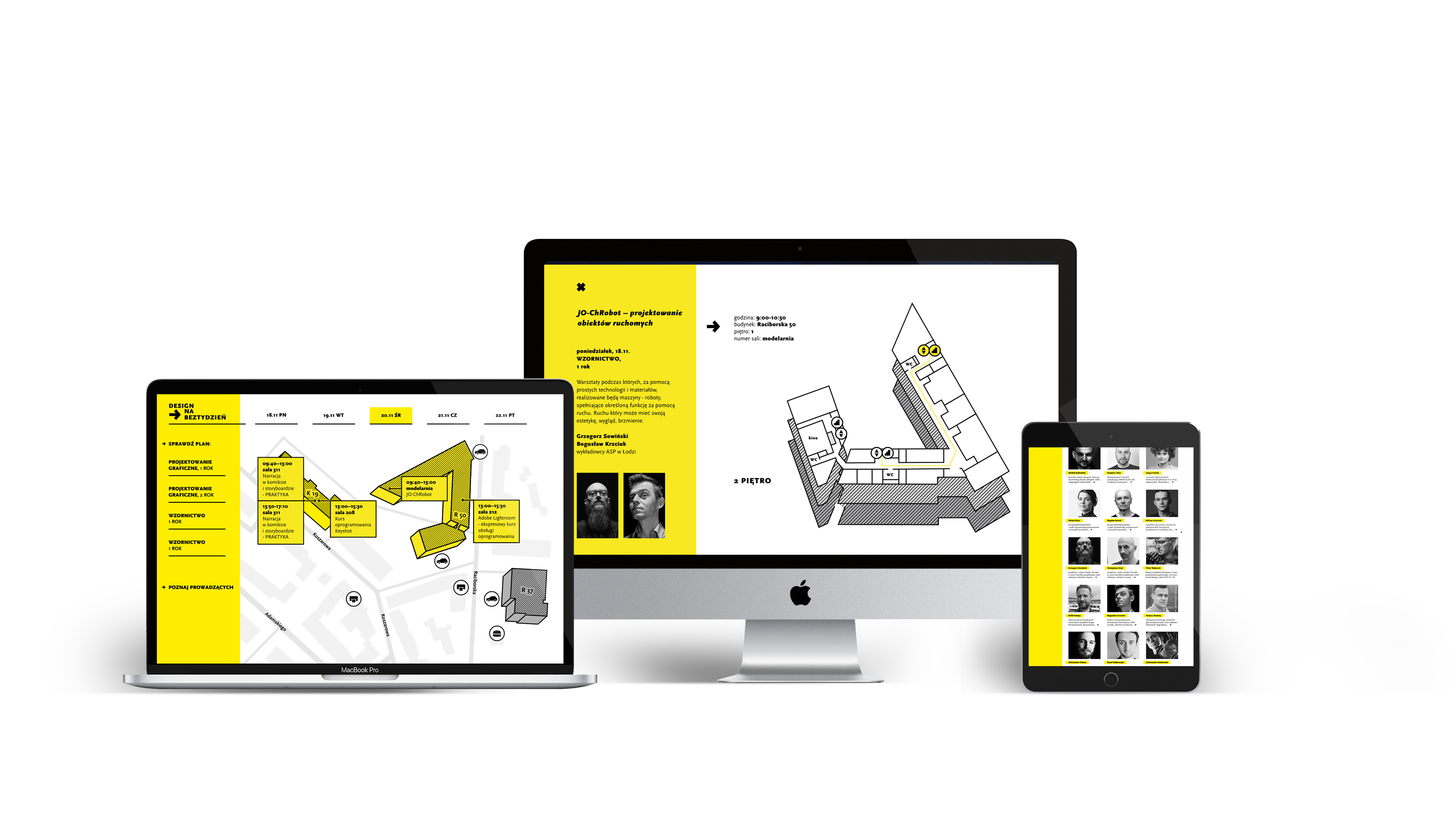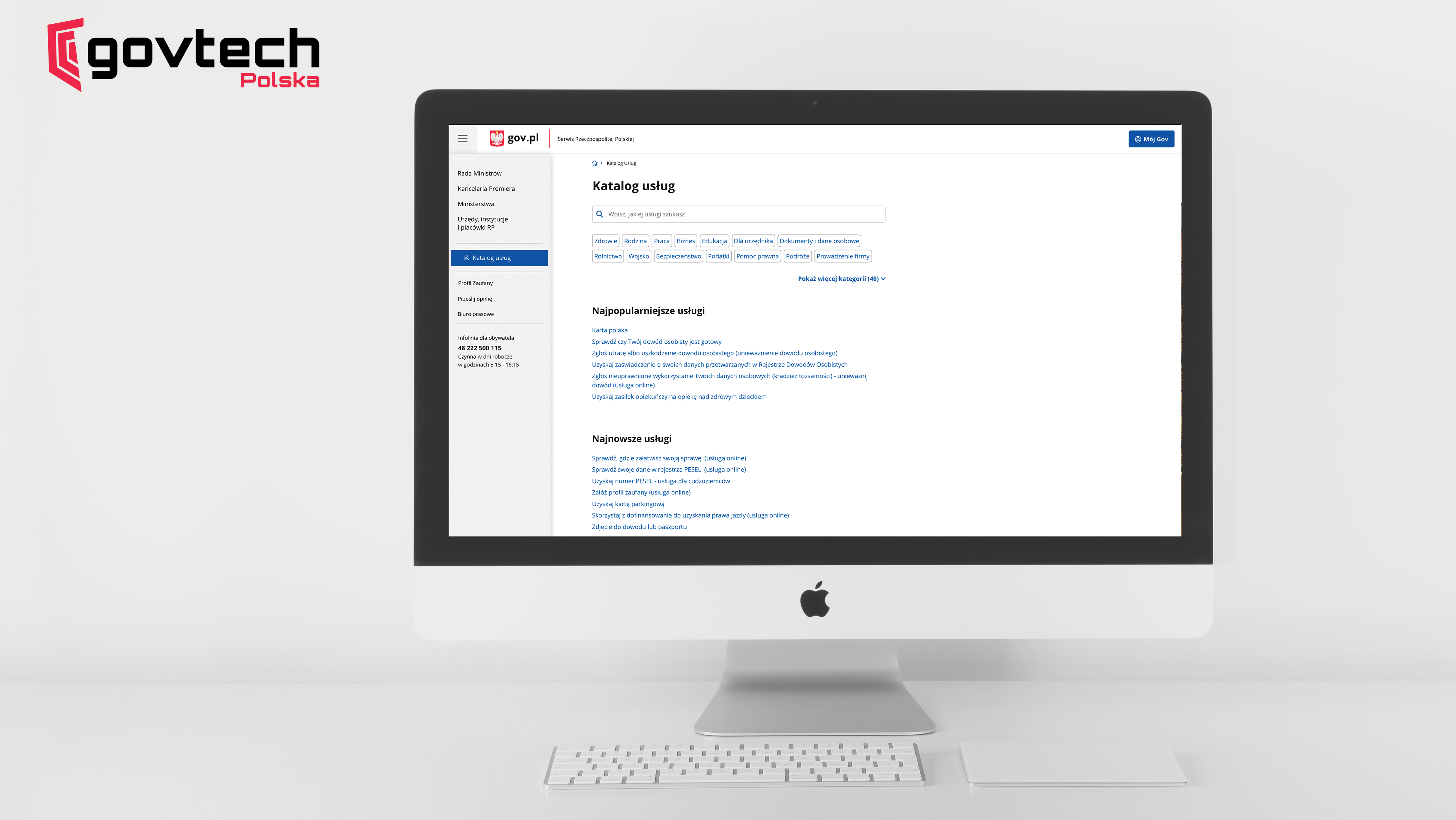ux design | Teamwork | Safari design | usability tests | figma
About
The project of the app helps to plan a trip according to the possibilities of time, location and transport. It is dedicated mainly for amateurs, busy people who do not have time to organize a tour or people who do not know the area where they live.
Context
The general subject of the student project was a mental health and work life balance. Working in a 4-persons team, we selected the trip planning topic, as a tool via brainstorming and crazy 8.
My role
I was a leader of the project responsible for delivering scopes of the work on time and managing the team. It took place at first days of university, so as a team we hadn't known each other, moreover one of us hadn't had experience in design before, therefore sometimes we needed to slow down the pace to respect everyone's capabilities.
Scope ad Phases
Process
Kick off:
After the topic was shaped and we made some desk research about the trips and target group, we framed two main questions:
How to help increase physical activity and reduce stress among young adults?
How to make it easier to organize trips for people who have no experience in this, newcomers who are unfamiliar with the neighborhood?
The discovery:
Firstly we analyzed the way we organize the trip – it was a great excuse to go for one, so in pairs we organized a one-day trip with backpack to immerse in this experience. It turned out we use three or more digital tools to arrange the trip (mountain trail app for checking the route, google maps for navigating to the startpoint of the route, trekking blogs for the tips on how to prepare for the trip and the weather forecast).
Next we created user story mapping based on our personal experience from our trips. Our common painpoints were: searching for the parking, preparing appropriate equipment, sense of direction during the trekking. Our gains: memories, contact with nature, sense of achievement.
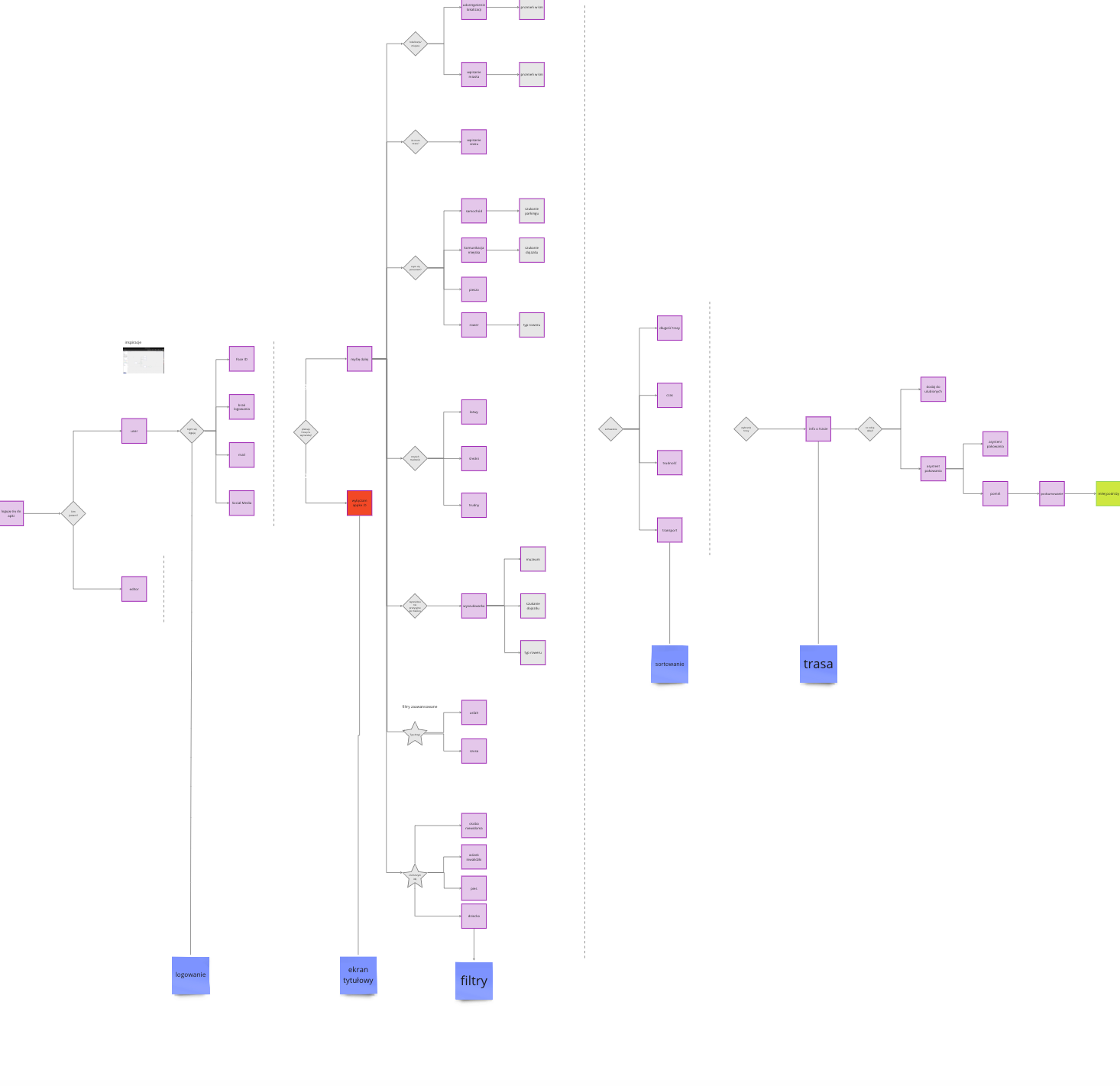
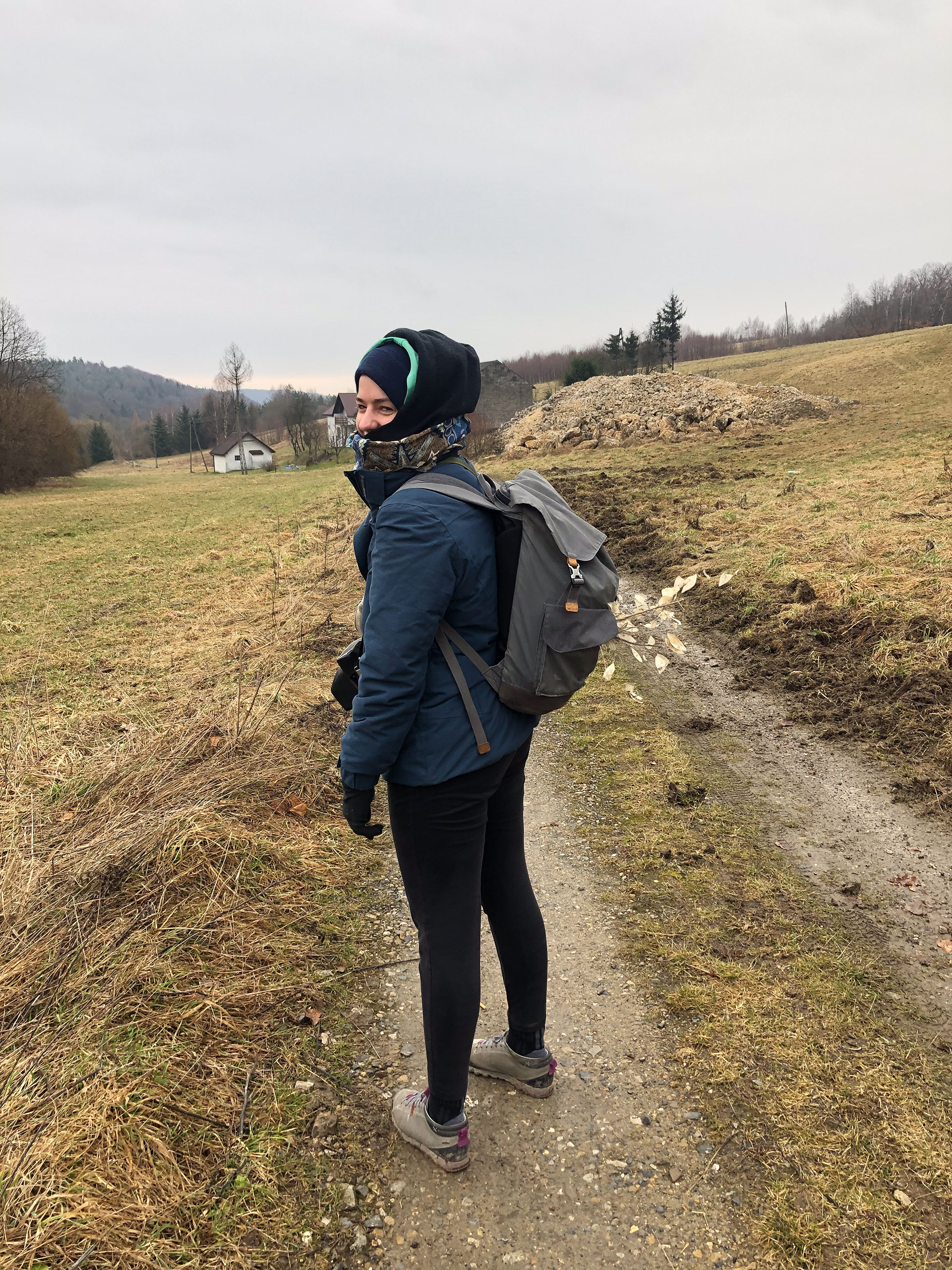
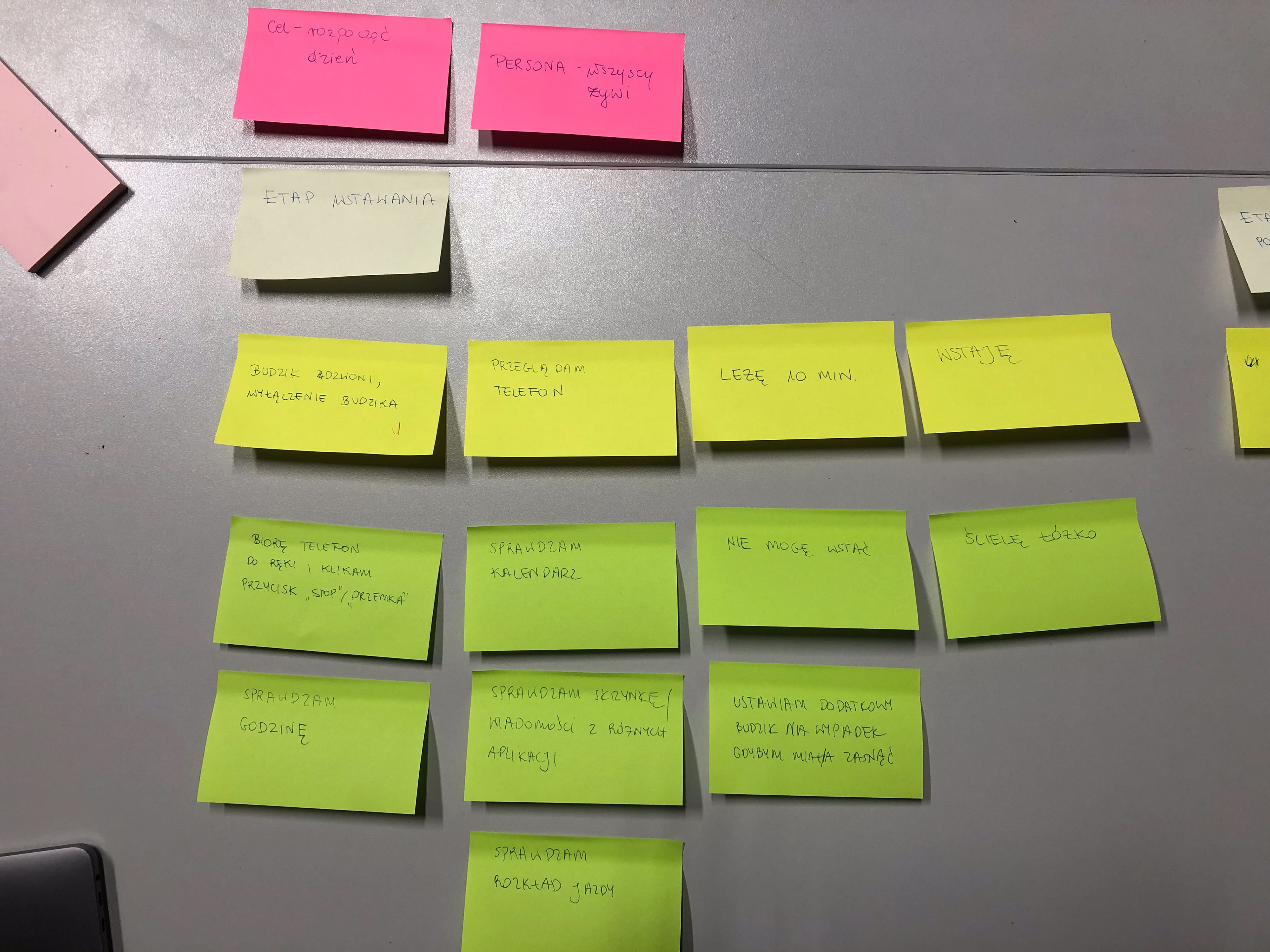



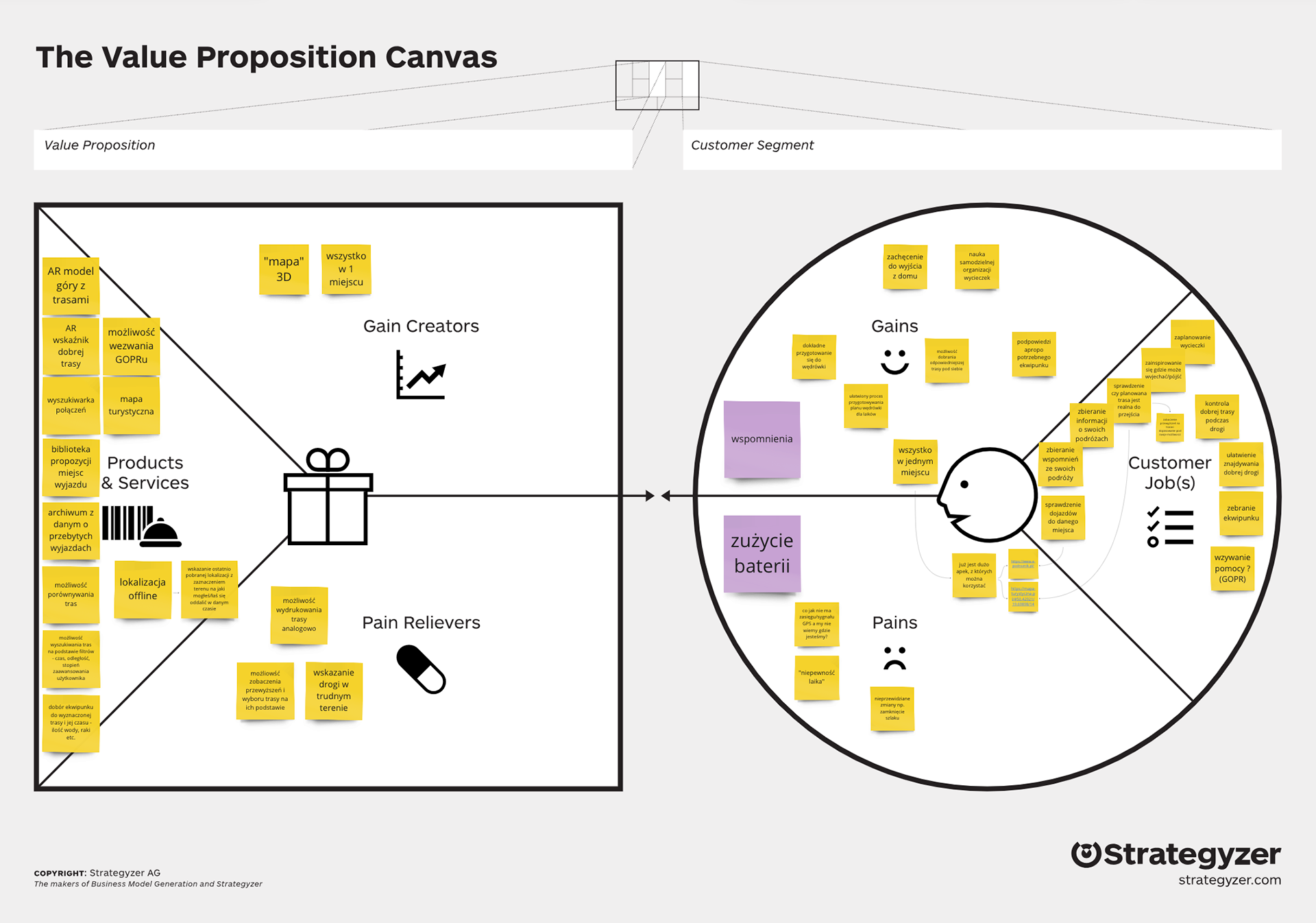
The approach:
On this basis we prepared Value Proposition Canva and Protopersona, but those tools weren't much relevant for the project, probably we couldn't understand them.
We analyzed other applications on the market and what was lacking in them.
Based on our own experience and analysis, we created a scheme for how the app works. After that we choose only fragment of the flow to realize it.
We distributed our work between us by screens and made a low-fidelity prototypes. Then we moved on to the first tests with 5 users, but due to the lack of time we missed to choose the representatives of target group but mostly make kind of "partisan" usability tests on our classmates and family members. That could not show deep insights but it showed that users needed a better introduction to the app – matching the proposed tours to their personal interests.
After testing, we added three introductory steps “what drives you?”, “how much time do you have”, “where do you start from?”
The outcome
What I have learned the most?
I had high expectations from this project but external difficulties like limited time of one semester and working with people that I didn't know before, made unforgettable friendships but was challenging in delivering on time. As a leader I have to learn better organizations and distribution tasks according to the people's skills.
I am proud of my idea to organize trips by ourselves as part of the research, because it helped us deeply understand the experience and explained our one teammate who wasn't familiar with design before, what is the user experience design about :)
semester project 2023
Jan Matejko Academy of Arts and Design
cooperation: Zuzanna Chomań, Agata Kątek, Joanna Staniszewska
supervision: Kamil Kamysz and Patryk Szymański
Jan Matejko Academy of Arts and Design
cooperation: Zuzanna Chomań, Agata Kątek, Joanna Staniszewska
supervision: Kamil Kamysz and Patryk Szymański


